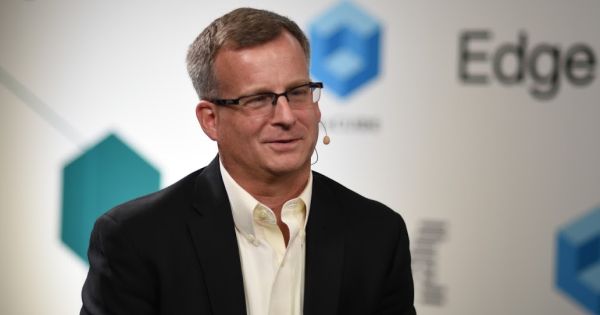 NEWS
NEWS
 NEWS
NEWS
 NEWS
NEWS
The workload of the past is not the workload of the future. Modern business needs more computing, done more quickly, than ever before. That means where a company might have run one storage node in the ancient days, now they’re running a dozen, or a hundred. Coordinating and scheduling workloads across that kind of system is a real issue. A software-defined layer is one solution.
To shed some light on software-defined systems, Dave Vellante (@dvellante) and Stu Miniman (@stu), cohosts of theCUBE, from the SiliconANGLE Media team, went to the IBM Edge 2016 conference in Las Vegas. There, they talked with Bernie Spang, VP of Software-Defined Infrastructure at IBM.
The discussion opened up with a definition of software-defined. Spang explained that the term means software that can be deployed on a variety of servers and work with storage media from a number of providers. He mentioned that IBM makes this software available for clients to implement themselves, or by help from partners and the IBM cloud.
Spang then described the need for software-defined systems. He stated that new generation workloads and new generation analytics frameworks are scale-out architectures that span dozens or even thousands of nodes. Because of this, businesses need a software layer that can schedule a workload across these massive compute resources.
Even a new technology has some similarities to the older systems. Spang related that there are two layers; the software layer where work is scheduled and the storage layer, which needs to offer shared access across its nodes to the applications. He understood these new-generation applications are just high-performance and supercomputer workloads.
“It’s just a new generation with a new name on it, Big Data Analytics or Cognitive Computing,” Spang said.
Spang stressed that there’s still a place for traditional IT for traditional applications, one that won’t go away. However, software-defined supports scheduling workloads on bare metal, virtual machines or containers so customers can have a mix of things. Doing it at the software layer gives a business great flexibility to absorb new workloads and technologies.
Watch the complete video interview below, and be sure to check out more of SiliconANGLE and theCUBE’s coverage of IBM Edge 2016.
Support our mission to keep content open and free by engaging with theCUBE community. Join theCUBE’s Alumni Trust Network, where technology leaders connect, share intelligence and create opportunities.
Founded by tech visionaries John Furrier and Dave Vellante, SiliconANGLE Media has built a dynamic ecosystem of industry-leading digital media brands that reach 15+ million elite tech professionals. Our new proprietary theCUBE AI Video Cloud is breaking ground in audience interaction, leveraging theCUBEai.com neural network to help technology companies make data-driven decisions and stay at the forefront of industry conversations.